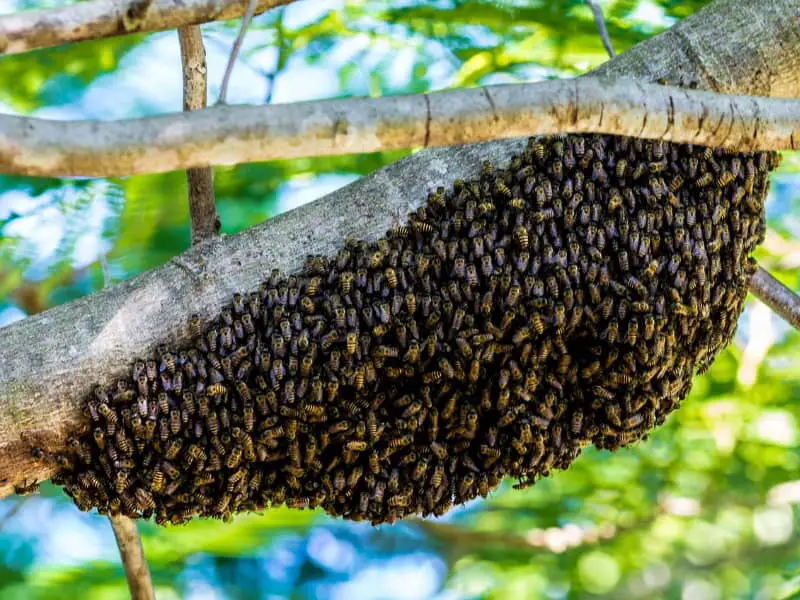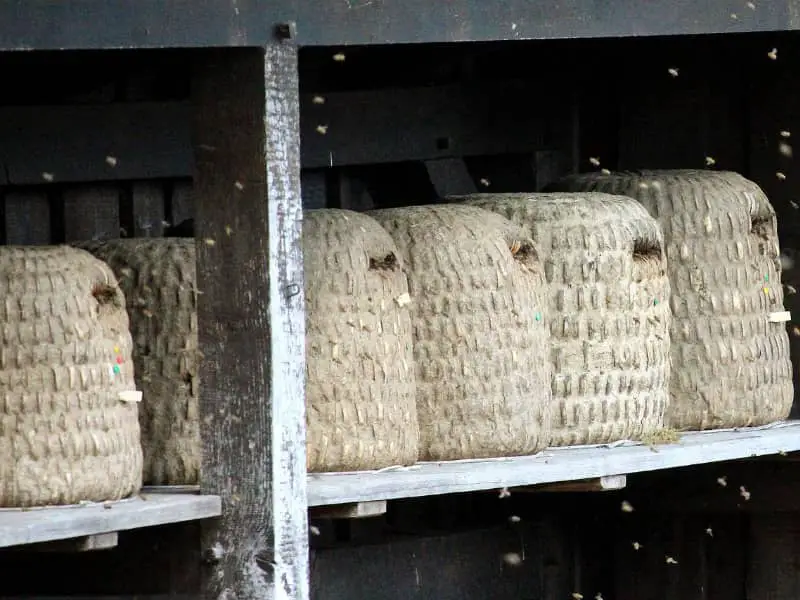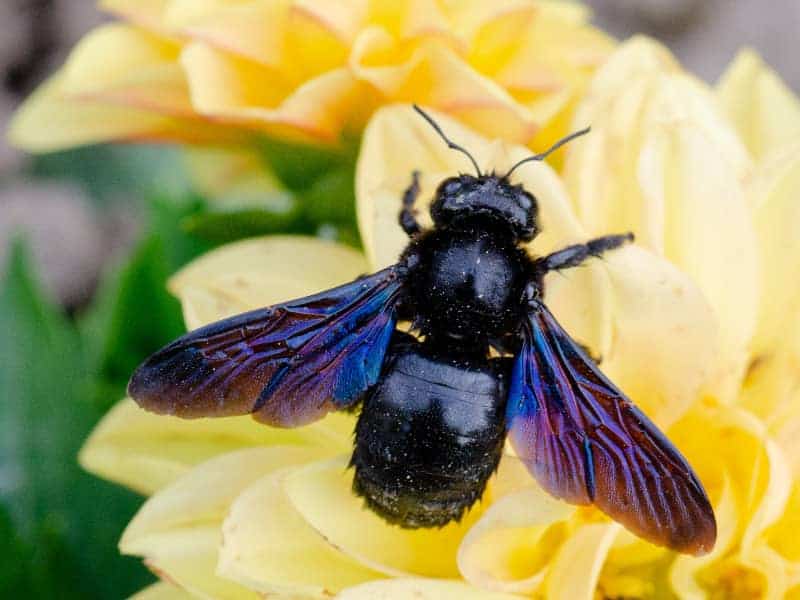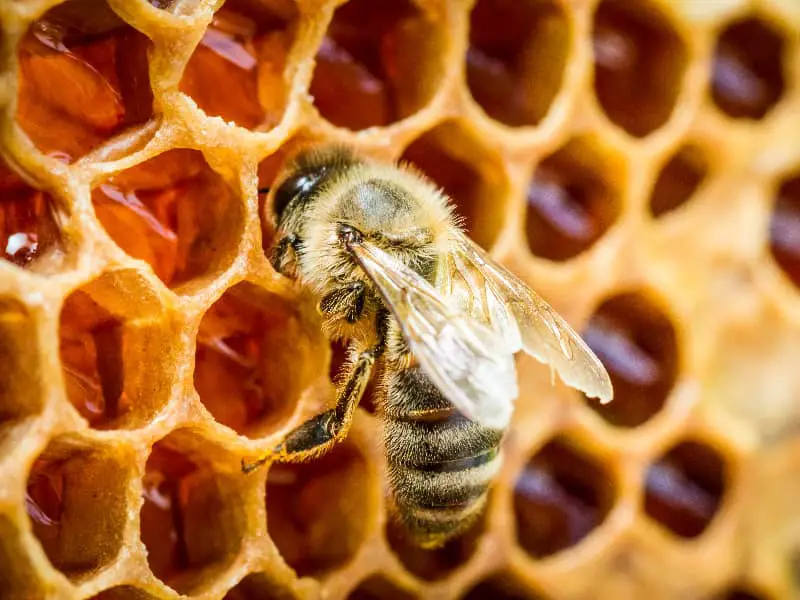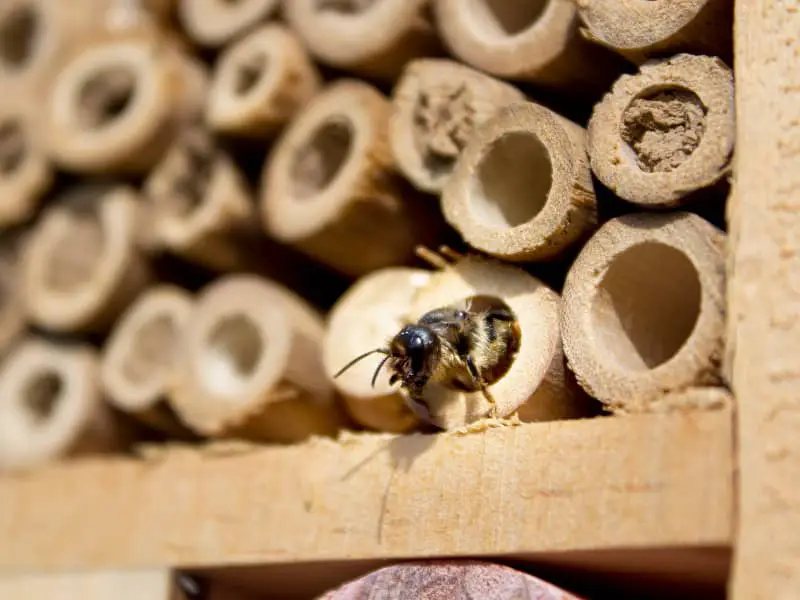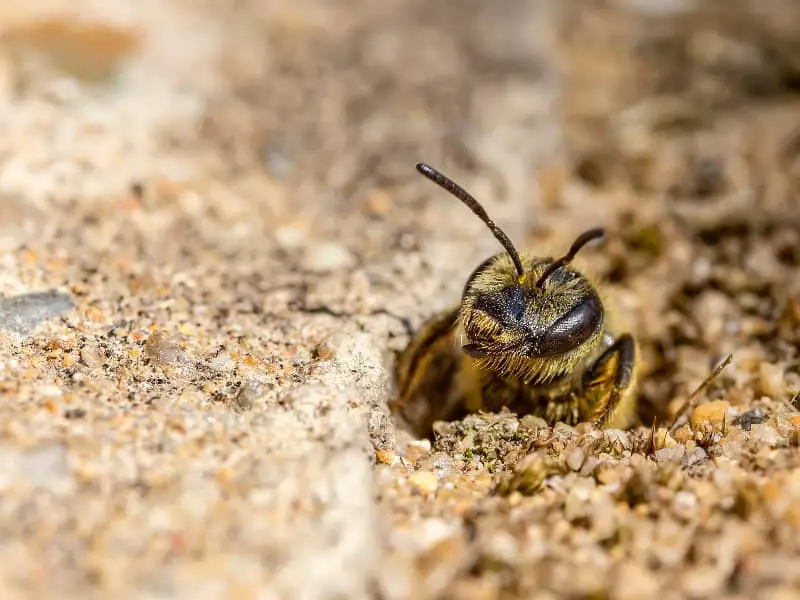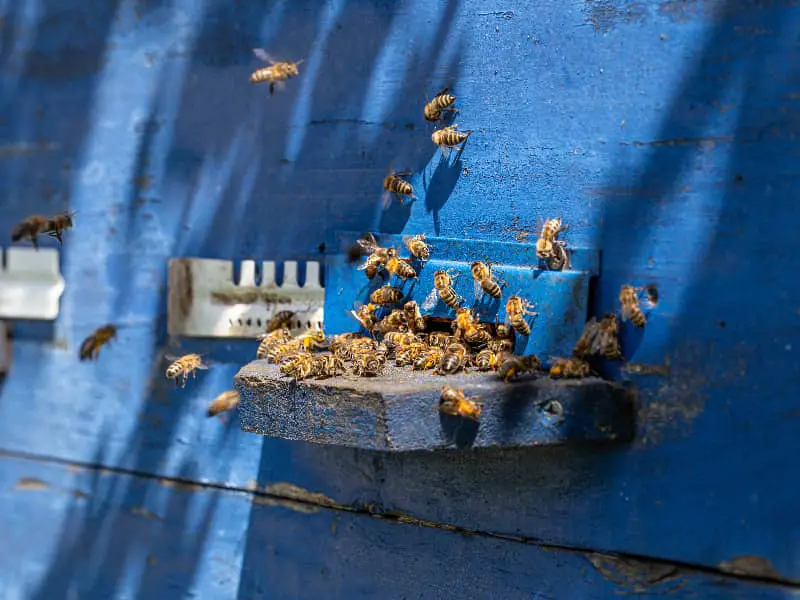
Bees predation
In the fascinating world of bees, there is a phenomenon that is of great importance not only for the bees themselves, but also for beekeepers and ecology: bee predation. This blog post is intended to provide in-depth insights into this topic while offering helpful information for beekeepers and those interested in the subject. Read on to learn all about the causes, identifying characteristics, and control of bee predation.
- Bees predation
- What is bee predation?
- Basics of bee biology
- Causes of bee predation
- Recognition features of bees predation
- The effects of bee predation
- Prevention measures for bees predation
- Options for action in case of acute bee predation
- Defense mechanisms of bees
- Seasonal aspects of the bees predation
- Conclusion: bees predation
What is bee predation?
Bee predation is a behavior in which a bee colony tries to steal honey or nectar from another, weaker bee colony. This can happen especially when there is a shortage of food and the hives do not have enough food stores. In such cases, predator bees try to enter a foreign hive in order to get the food supplies there.
Why is the topic important?
The effects of bee predation can be severe. For the affected hive, it means a significant loss of vital resources. But not only that; predation can trigger a chain reaction that, in extreme cases, can lead to the collapse of an entire hive. The consequences should not be underestimated for the beekeeper either, as less honey is produced and additional effort is required for bee care.
What can the reader expect in this blogpost?
In the following sections, various aspects of bee predation are discussed in detail. From basic mechanisms to preventive measures and recommended actions for beekeepers, this article provides a comprehensive picture of the subject. By incorporating expertise and experience, an informative and helpful guide is created for anyone who wants to learn more about this interesting and important topic.
Basics of bee biology
To fully understand the phenomenon of bee predation, a basic understanding of bee biology and social behavior is essential. In this section, we review the organization of the hive, the distribution of roles in the bee colony, and the importance of food stores.
The organization of the hive
A hive is a highly organized community in which each bee has a specific role. From the queen, who is responsible for laying eggs, to the workers, who perform various tasks such as gathering food and caring for brood, to the drones, who take care of reproduction. This organization is crucial for the survival of the hive. If it is missing, this can disturb the balance and make the hive vulnerable to predation.
Distribution of roles in the bee colony
In a bee colony, there is a clear hierarchy and division of labor. Workers take on different roles depending on their age, ranging from brood care to foraging. It is predominantly the older workers who procure food as so-called forager bees. They are also the ones who can become predator bees in times of food shortage. The younger workers are mostly responsible for the internal tasks of the hive and play a crucial role in defense against predator bees.
The importance of food stocks
Food stores in the form of honey and pollen are essential for a hive, especially when it comes to surviving winter months or times of food shortage. An adequate supply can reduce the likelihood of bee predation, as bees are less vulnerable to external threats. However, a lushly stocked hive can also become a target for predator bees, so balance and good monitoring strategies are important.
With these basics in mind, understanding the complex mechanisms of bee predation will be facilitated. The next section will look at the causes of this phenomenon.
Causes of bee predation
A deep understanding of the causes of bee predation is crucial to take preventive measures and effectively solve existing problems. This section is dedicated to the main causes such as lack of food, weak colonies and lack of defense mechanisms.
Food shortage
Lack of food is one of the most common causes of bee predation. During times when natural nectar sources are scarce, bees may begin attacking neighboring hives to obtain their food supply. The risk increases especially in the late summer and fall months when natural food sources begin to dwindle. It is therefore important for beekeepers to keep an eye on food levels and, if necessary, compensate by feeding.
Weak peoples
A weak colony is an easy target for predator bees. Weaknesses can result from various factors such as diseases, parasite infestation or a low number of worker bees. In such cases, the hive's defenses are significantly reduced and it becomes vulnerable to attack. Identifying and strengthening weak colonies is thus an effective preventive measure.
Lack of defense mechanisms
Defense mechanisms play a crucial role in the defense of a hive. A well-organized colony posts guards to guard the entrance to the hive and repel intruders. If such mechanisms are missing, either due to poor organization or distraction, this can open the door for predator bees.
If we understand these causes, we can develop effective strategies to minimize or eliminate bee predation. In the next section, we will address how to detect bee predation early.
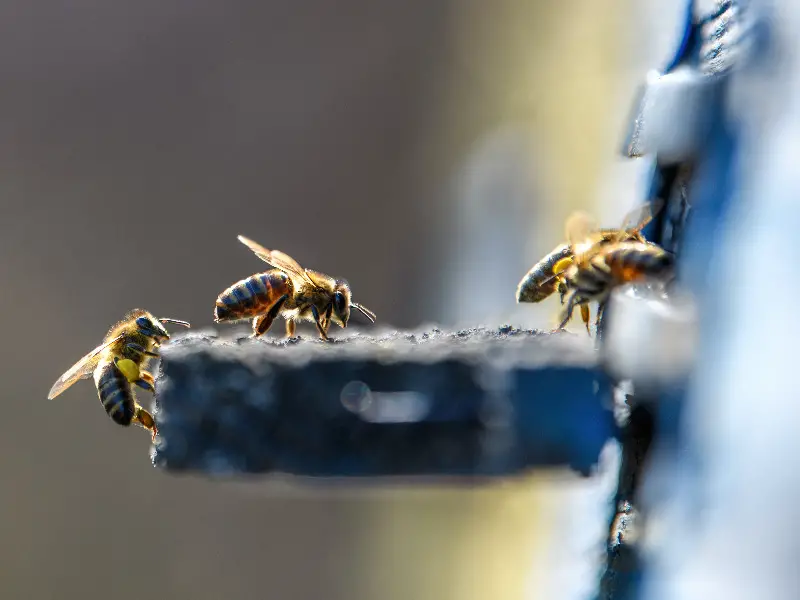
Recognition features of bees predation
Early detection of bee predation is crucial to take appropriate action. The following points should help to interpret the signs in time and to assess the extent of the situation.
Bees behavior
One of the most noticeable behavioral changes during a predation is increased activity at the entrance to the affected hive. Predator bees often fly in a rapid, undirected pattern, attempting to enter the hive. In doing so, they may also be more aggressive toward the hive guards. Another indication is that the predator bees fly directly to the food supply instead of looking around the hive first - a clear sign of the goal of their mission.
Condition of the hive
A hive affected by predation may show various signs of stress and confusion. The guard bees at the entrance are on heightened alert, trying to ward off intruders. In severe cases, the inside of the hive may be devastated, with destroyed combs and honey carelessly distributed through the hive.
Physical characteristics of the predator bees
Evidence of predation can also be found on the bees themselves. Predator bees are often covered in honey, as they often spill honey when they quickly and carelessly collect the predator's product. In addition, they are sometimes physically stressed and exhausted, especially if they have experienced resistance when trying to enter the hive.
The effects of bee predation
Bee predation is not only a threatening phenomenon for the affected hive, but also has far-reaching implications for the beekeeper and the entire ecosystem. Here we take a closer look at the consequences in these different areas.
For the hive
The most direct and devastating effects of predation are, of course, felt by the affected hive. A heavily robbed hive may lose its food stores, jeopardizing winter survival. Likewise, the stress and confusion caused by predation can disrupt the social structure of the hive, leading to a decrease in productivity and even hive collapse.
For the beekeeper
For the beekeeper, bee predation can be a real challenge. Apart from the possible loss of the honey harvest, he has to deal with the complex problems of hive health and rebalancing the hive. This can be both time and resource consuming, and in severe cases it may be necessary to break up the entire hive and start over.
For the ecosystem
The impact of bee predation goes beyond the individual hive or beekeeper and can affect the entire ecosystem. A weakened or destroyed hive reduces pollination in the surrounding area, which in turn can impact plant life and thus the entire food chain. In the long term, this can lead to a reduction in biodiversity and destabilization of the ecosystem.
The far-reaching impact of bee predation underscores the importance of taking this phenomenon seriously and developing effective strategies for prevention and control.
Prevention measures for bees predation
To minimize the risk of bee predation, there are several prevention measures that can be taken. From strengthening hives to identifying predation-prone periods to ensuring a balanced diet for bees, prevention is key to avoiding this harmful behavior.
Strengthening the hives
A strong, healthy hive is the best defense against predation. This means carrying out regular checks to ensure that the hive is free from diseases and parasites. Also, the queen should be in good condition and the hive should have a sufficient number of workers. A strong hive can repel intruders more easily and has a better chance of survival in case of attack.
Recognize predator prone times
Certain times of the year are particularly vulnerable to bee predation, especially late summer and fall when natural nectar sources become scarce. Beekeepers should be especially vigilant during these times and monitor their hives closely. Early detection is critical to containing a predation outbreak.
Ensure balanced diet
A balanced diet is critical to the health and strength of a hive. At times when natural nectar sources are scarce, it may be wise to feed the bees to meet their nutritional needs. This reduces the risk that bees will start robbing neighboring hives out of desperation. However, feeding should be done carefully so as not to inadvertently attract predation from other hives.
Options for action in case of acute bee predation
When you discover that your hive has fallen victim to predation, quick action is required. From immediate action to long-term solution strategies, there are different ways to handle the problem. Also, depending on your experience level, different tips can be useful.
Immediate measures
If there are signs of predation, you should take immediate action. One way is to make the entrance of the hive smaller to make it easier for the guard bees to defend themselves. Another option is to use flight hole grids that allow only the bees of your own hive to pass. In extreme cases, even a complete relocation of the hive might be necessary.
Long term solutions
While immediate measures are important to ward off the current attack, you should also think about long-term solutions. These include increased monitoring during predation-prone periods and regular hive health checks. Better isolation between different hives can also be helpful in minimizing the risk of predation.
Tips for beginners and professionals
Regardless of your experience as a beekeeper, there are certain tips that can be useful. Beginners should definitely acquire basic knowledge about bee predation and familiarize themselves with the signs and symptoms. Professionals might consider using more advanced techniques such as selectively breeding resistant bees or using technological tools for monitoring.
Defense mechanisms of bees
Over the course of evolution, bees have developed various mechanisms to defend themselves against predation. These mechanisms range from natural defense strategies to built defense systems and efficient coordination in the hive. In this section, we dive deeper into these complex defense methods.
Natural defense
Bees are not completely defenseless when it comes to predation. They use their stingers to ward off intruders and even release pheromones to alert other members of the hive. Some bee species also have special guard bees that can patrol the entrance of the hive and identify intruders.
Built defense systems
In addition to natural defenses, bees also have the ability to build physical defenses. The most prominent example is "propolis," a mixture of plant resins collected by bees and then used to seal gaps and cracks in the hive. This serves not only to provide thermal insulation, but also to defend against intruders by making it more difficult for them to enter the hive.
Coordination in the hive
The bees in the hive work in perfect coordination to optimize their defense. They divide into different roles, from guard bees that guard the entrance to fighter bees that attack intruders. This division of labor is coordinated by pheromones and tactile signals to enable a quick and efficient defensive response.
Seasonal aspects of the bees predation
Predation among bees is not evenly distributed throughout the year. Different seasons and climatic conditions can influence the extent and likelihood of predation. This includes both external factors such as weather and adaptation strategies that beekeepers and bees may use.
Seasons and bees predation
The likelihood of bee predation can vary depending on the season. During spring and early summer, there is usually sufficient nectar and other resources, which minimizes the risk of predation. In late summer and fall, however, when food sources become scarcer, the risk increases. Vigilance during these late seasons is therefore especially important.
Climate influences
Climatic conditions such as temperature and precipitation can also have an impact on predation. During high temperatures and prolonged drought, natural nectar sources may dry up, which could cause bees to seek alternative food sources in neighboring hives.
Adaptation strategies
Adaptability is crucial when it comes to protecting the hive from predation. Beekeepers, for example, can consciously choose the position of their hives to minimize the risk. The bees themselves adapt their collection activities to the seasons and strengthen the hive's defenses during predator-prone times.
Conclusion: bees predation
The phenomenon of bee predation is complex and multifaceted, with a number of factors affecting both predators and victims. From the specific signs that indicate predation, to the various defense mechanisms of bees, to seasonal and climatic influences, the subject offers a wide field for observation and study.
It is essential for beekeepers to actively address this issue in order to effectively protect their hives. Both preventive measures and reactive courses of action play a key role. A proactive approach based on close observation, understanding of bee biology and adaptive strategies is the best way to minimize the risk of bee predation and ensure long-term hive health.
The issue is not only important for beekeeping, but also has far-reaching implications for our ecosystem. By protecting bees, we help maintain biodiversity and ecological balance, which ultimately benefits all life forms on our planet.
In conclusion, bee predation is a serious challenge, but one that can be overcome with the right strategies and a deep understanding of bee needs and behaviors.
Author

-
Garden animal - A life with nature
Welcome to my animal blog! My name is Dirk and I am happy to take you on my journey through the fascinating world of animals and gardening.
Born 54 years ago, I have had an insatiable curiosity for the animal world around me since childhood. Although I have moved professionally in other industries, my true passion has always been animals and nature. It is remarkable how a small garden has become such an important part of my life.
Many of my fondest memories are associated with the animals that share our home. Whether it's the curious squirrels that scurry across the trees in the morning, the colorful variety of birds that visit our feeders, or the busy bees and butterflies that pollinate our flowers, every moment with them is invaluable to me.
This blog is my contribution to share my experiences, discoveries and insights with like-minded people. Here I will share stories of unforgettable encounters with animals, give tips on gardening and creating wildlife-friendly habitats, and take you on my journeys through nature.
Thank you so much for being here!
Cordial,
Dirk aka garden animal
Last posts
- 27. February 2024PetsVeganes Hundefutter – Grün und Gesund?
- 18. January 2024ChickensOregano für Hühner
- November 27, 2023HamsterDiurnal hamsters
- November 24, 2023HamsterHamster hammock

